I’ve been a runner since my first year of secondary school, when my football (soccer) coach (also the athletics coach) made me promise to turn up in the springtime for track practice. I started out as a very ordinary 14-year-old mile runner, but kept growing and improving, and eventually had a good high school and university career as a track runner, then, like many people, moved up in distance and onto the roads in search of post-collegiate racing opportunities.
I had more athletic adventures (I ran in several World Championships and nearly an Olympic Games, representing Hong Kong, thanks to my status as a permanent resident in a time when Hong Kong had no “citizens”), and they all involved running shoes, until one day while I was traveling overseas I received an email from a friend, “I entered you in the Macau International Triathlon! I’ll arrange a bike for you. See you in two weeks!”
Of course I knew how to ride a bike, but I had never worn cycling shoes (my friend sourced a pair of those for me also, and they were almost the right size!), and never “raced” a bicycle, but what the hell, right? On the morning of the race, I met my friend at the Macau Ferry Terminal in Hong Kong and we crossed the Pearl River delta through high winds and chop that promised to make my debut triathlon memorable.
I’m not a cyclist and I’m not a swimmer, but I can swim. I learned, as many Americans of my generation did, in classes organized by the Red Cross, and although I hadn’t swum much (except fooling around on boat trips) since I was little, my aerobic engine was big enough that I could churn through the water at a decent pace.
So I stood on the beach on Coloane Island with another few hundred triathletes, on a windy and cloudy day, until the race director pulled the trigger on his air horn. The Macau International Triathlon was (and perhaps it no longer exists?) an Olympic distance race, meaning it consisted of a 1.5-kilometre swim, a 40-kilometre bike ride, and a 10-kilometre run.
I dashed into the sea and did my best, but the swim – especially in rough water – was always going to be my worst discipline (or so I thought at the time!) and I emerged in close to last place, or at least it seemed like that, looking at how few bikes remained in the transition area. I found my bike (easily!), put on my borrowed cycling shoes and helmet, clipped in (yay!) and headed out. As I remember it, the course circled Taipa Island, and included a dogleg out most of the way across the New (and that time it really was new) Macau-Taipa Bridge and back.
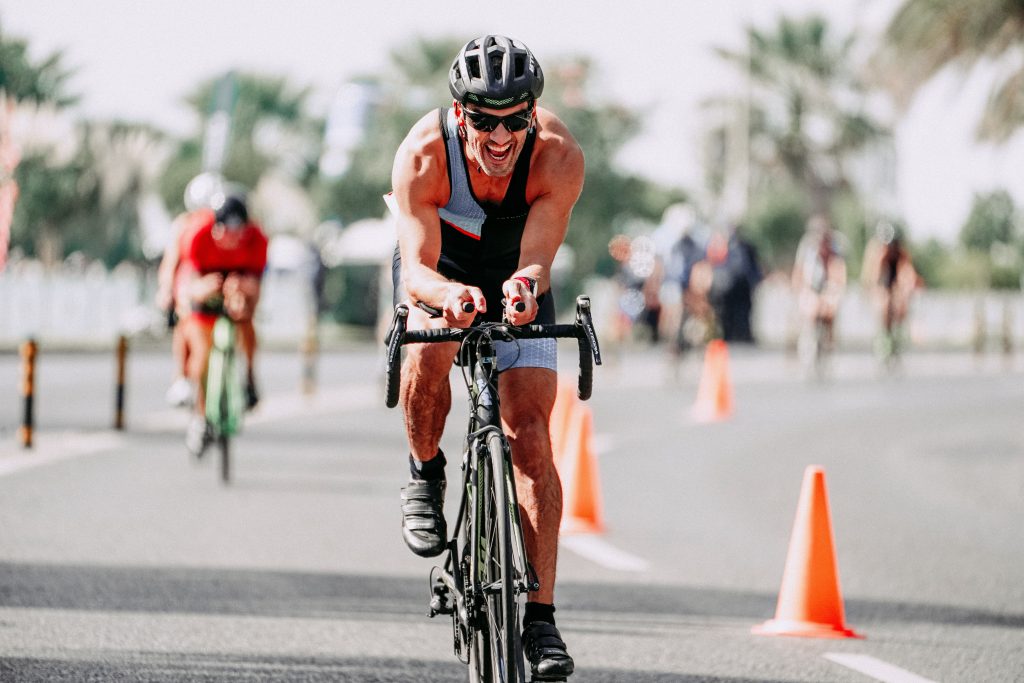
Because I had finished the swim in nearly last place, and wasn’t a powerful cyclist, I rode the 40-kilometer bike leg alone. Did I overtake a few people? Maybe, but just a few. And on the bridge, grinding into 50-knot headwinds as I returned to Taipa and the run leg, I was not thanking the friend who had signed me up for the race. My back was aching, I seemed to barely be moving forward, and I was still at the back of the field.
Eventually, I got to the run transition zone, dumped my bike and helmet, laced up my running shoes, and got into my comfort zone. At that point, I was Hong Kong’s best runner, so I banged out the 10K pretty quickly, and overtook a lot of people who had kicked my butt during the swim and bike legs. I will never forget that after I finished, a Frenchman I had overtaken in the final 100 meters came up to me, outraged, and said (please use your best French accent here), “But zat eez not correct! You had way too much left at ze finish!” My friend who had arranged our morning of fun was standing there (he was a terrible swimmer, but a good cyclist and a decent runner, and had finished ahead of me) and laughed.
Later, the race winner came up to ask me how I had enjoyed it, and I told him I had thought about quitting during the bike, way up on the bridge, battling 50-knot headwinds. He said, “Me too! But I was leading, so I thought I might as well carry on!”
That was my one and only foray into triathlon. I had enjoyed it (sort of), but I thought Hong Kong was simply far too dangerous a place to practice cycling (and I know a handful of people who have been badly injured by aggressive or careless motorists).
I did, however, enter a bunch of aquathlons, which involve swimming and running. As I have said, my swimming is not fabulous, but it’s not terrible, and although I was never able to stay with the top triathletes during the swim, I was almost always able to overtake them during the run. And so I won a bunch of aquathlons, which was a fun change from regular running races.
In Singapore, if you have a “friend” who signed you up for your first triathlon while you were out of town, you may have participated in one of MetaSport’s or Trifactor’s events. Both organizers offer a range of events and distances, including kids’ races, and the atmosphere is extremely welcoming to newbies. Don’t think your swimming is up to a competitive standard? Enter a run-bike-run! Don’t feel your bike skills are tour-ready? Test yourself in an aquathlon.
But I don’t recommend avoiding your weak points. It can be fun to venture out of your comfort zone.
If you’re a trail runner, you probably know what it’s like to get out of your comfort zone. There are thousands of trail races that take runners into wild terrain and ask them to dig deep inside themselves to get to the finish line.
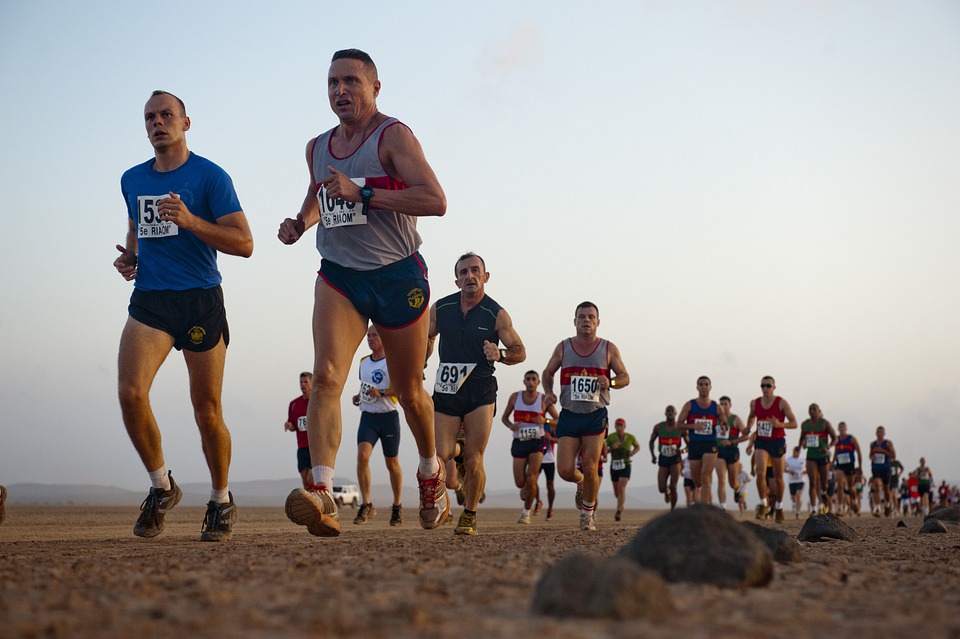
Some of the legendary races are the Marathon des Sables, a multi-day, carry-what-you-eat stage race that has been held in North Africa’s Sahara Desert since 1986; the 400-kilometre Ultra Trail Gobi Race, in Mongolia’s Gobi Desert; and the Barkley Marathons, a wilderness ultramarathon inspired by the 1977 escape from Brushy Mountain State Penitentiary of James Earl Ray, Martin Luther King Jr’s assassin. Caught by police after 55 hours, Ray was only 13km from the prison, prompting Barkley race founder Gary “Lazarus Lake” Cantrell to think he could have covered 100 miles (162km) in the same time. Completing the Barkley requires completing five loops of an almost entirely untracked and unmarked course created by Cantrell, and is so difficult that during the 36 years since the race was founded, only 15 runners have finished.
But you don’t have to be an ultra-trailrunner in order to get out of your comfort zone and have some fun.
The same Gary Cantrell who dreamed up the Barkley Marathons invented the “backyard ultra”, a diabolically simple race concept that has gone global, and has seen some of the world’s top ultrarunners push themselves to almost unimaginable heights.
The backyard ultra concept is simple: Competitors must run a 6.7km lap of a pre-determined course in less than one hour. When each lap is completed, the time remaining within the hour is typically used to recover for the next hour's run. Exactly one hour after the start of the first lap, competitors must run another 6.7km lap, again within an hour. These loops are repeated hourly. The race ends when there is only one person remaining on course and they complete their final 6.7km loop and cross the finish line. Fun fact: the total distance run by a competitor who completes 24 loops (24 hours) is exactly 160.9km (100 miles). Another fun fact: the world record is 90 laps/hours (covering 603 kilometres!).
What is it like to run a backyard ultra? The (diabolical) inventor, Cantrell, compares running a backyard ultra to “lining up every hour and taking a punch in the face. Not a hard punch. A gentle punch. But every hour you line up and get punched again.”
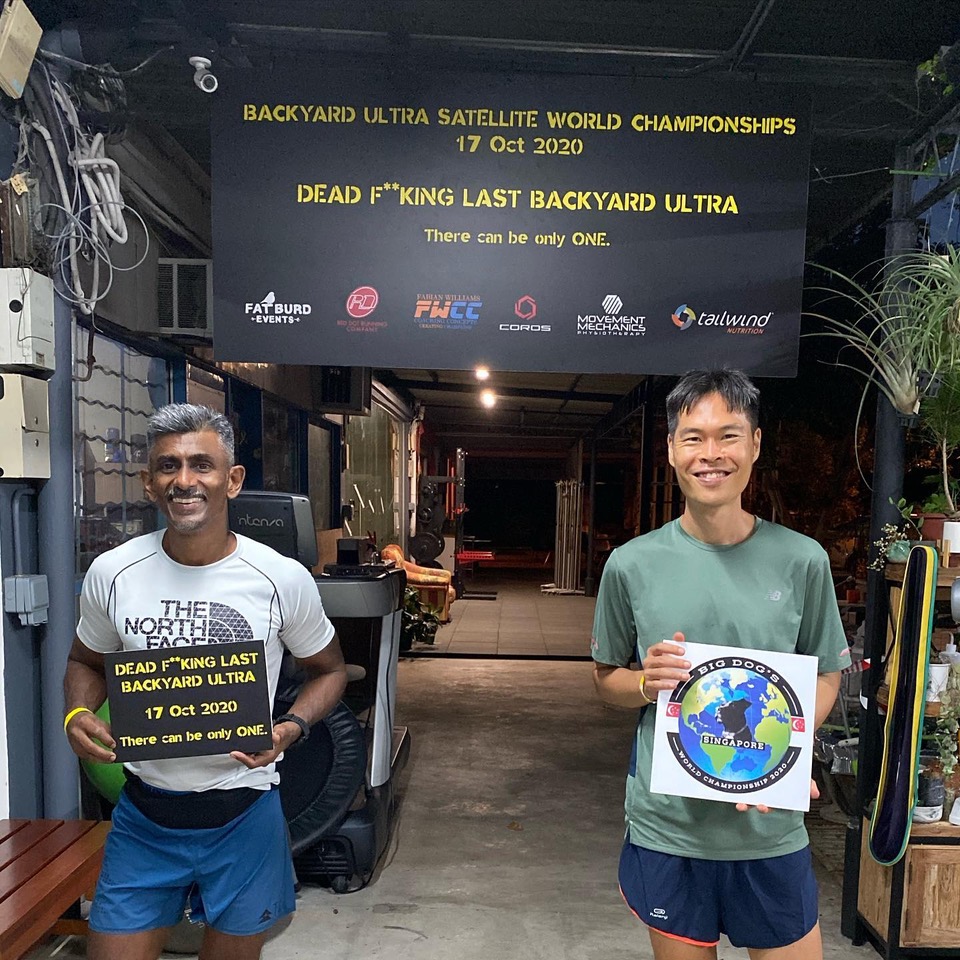
Sound like fun? Singapore-based organizer Fatburd Events organized a backyard ultra last year, in East Coast Park, won by Abimanyu Shunmugam in 34 hours (227.8 kilometres). Hoong Wei was second (in backyard ultra parlance, “the assist”), completing 33 laps.
Best of all, Fatburd Events is organizing another backyard ultra, on Saturday, October 15, in Pasir Ris Park. The concept is simple, and of course you can complete one lap (hour). You can almost certainly complete six laps. But what about farther and longer? If you’re interested in getting out of your comfort zone … check it out at www.fatburdevents.com.
Fatburd Events is doing some other stuff that is designed to provide fun alternatives to those endless loops of MacRitchie or your regular Sunday long run in East Coast Park.
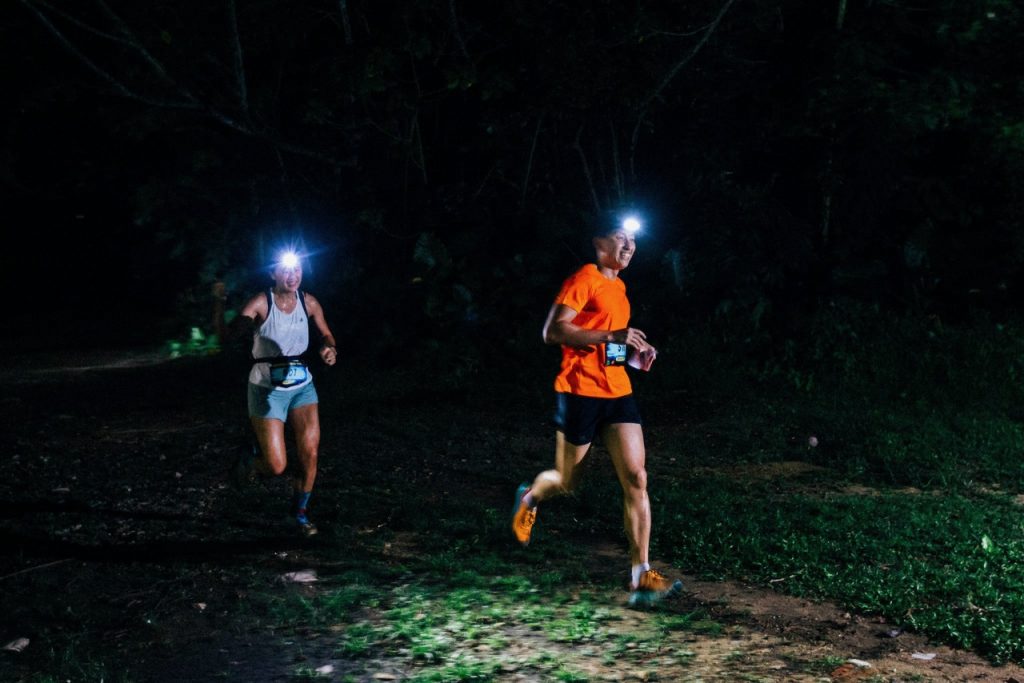
They recently organized the first in their “Nightcrawler” series of nighttime jungle trail races, at the Cycosports Jungle Cross Trail. There was a 5K and a 10K, and headlamps were definitely not optional!
If you’re a runner who has not raced much, or at all, it’s worth knowing that most races on earth are not elite-only, but instead, great fun for everyone, with age group categories (win prizes!), and plenty of competitors who don’t look like Olympians and don’t run like them either.
A couple more races that Fatburd Events has organized, or plans to organize: on 9 October, the company will stage its first “Wah, SUP!” race, comprising a SUP (stand-up paddleboard) leg and a running leg. Pre-pandemic, they organized a track race called “The Eliminator”, in which after every lap, the last-place runner is eliminated, creating a race within a race, as competitors work to conserve energy for the finish, yet avoid elimination along the way. There’s a lot of strategy, but basically it’s just a fun way to get in a hard training session.
Other sports you might consider trying for fun, or for their cross-training benefits, include longboarding/skateboarding via The Longboard Academy, which offers classes, and whose instructors include guys who have done some competitive super-long distance skating (yes, of course that’s a thing!); or orienteering (trail running, with navigation) via 65 Adventure. I tried orienteering a couple of years ago and it was a fantastic combination of fartlek running and map-reading.
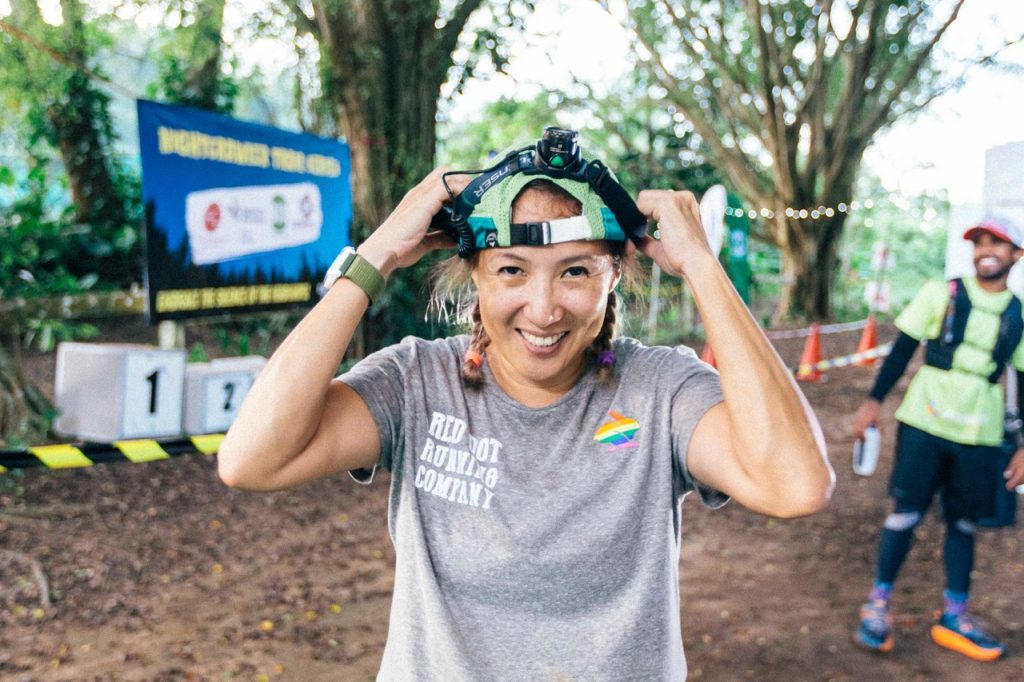
Finally, Fatburd Events has for several years been organizing a Beer Mile (now a non-alcoholic beer mile). If you haven’t heard of a beer mile, you’ve been missing out. The concept is very simple: drink a beer, run 400 metres, drink another beer, run another 400 metres, drink a third beer, run a third 400 metres, then drink a fourth beer, and run the final 400 metres (plus another 9.3 metres gets you to a mile).
The world record for men is 4:21.8, and the world record for women is 6:16.5. Olympic medalists have tried for the record and come up short, which should tell you it’s not really about how fast you can run, but about how fast you can run after having chugged a beer every 400 metres!
In 2022, Fatburd Events’ Beer Miles have been conducted using non-alcoholic beer, but don’t get overconfident. With regular beer, you would have been finished by the time the alcohol hit your system; it’s the liquid and bubbles that make the event so tough. Oh, and did I mention that the rules call for a penalty lap if you throw up during the race? It really is about the beer drinking, not the running.
If you’re not a drinker, even of non-alcoholic beer, there is a Blue Jean Mile. During the height of the COVID-19 pandemic, elite U.S. track runner Johnny Gregorek undertook a fundraiser for a mental health non-profit, and ran a mile in track spikes, his racing vest, and a pair of blue jeans. The previous Blue Jean Mile “world record” was 4:11, but Gregorek (a 3:50 miler in running shorts) busted out a 4:06, which is seriously moving. The big question is whether or not Gregorek might be able to down four beers in 15 seconds and take the Beer Mile record in blue jeans!
If you sometimes feel that your training is stagnating and your motivation is flagging, get out of your comfort zone. You don’t need to join an official race. Gary Cantrell dreamed up the Barkley Marathons and the backyard ultra. The Ironman triathlon – and many other great events – got its start when a few athletic friends said, “Hey, do you think it’s possible to …”
Most of the time, it is possible, and it’s fun!











Comment (0)